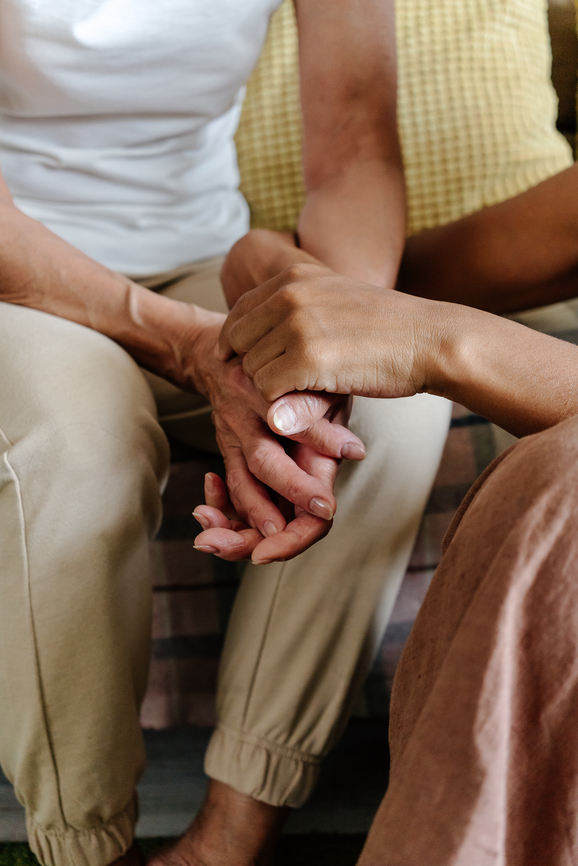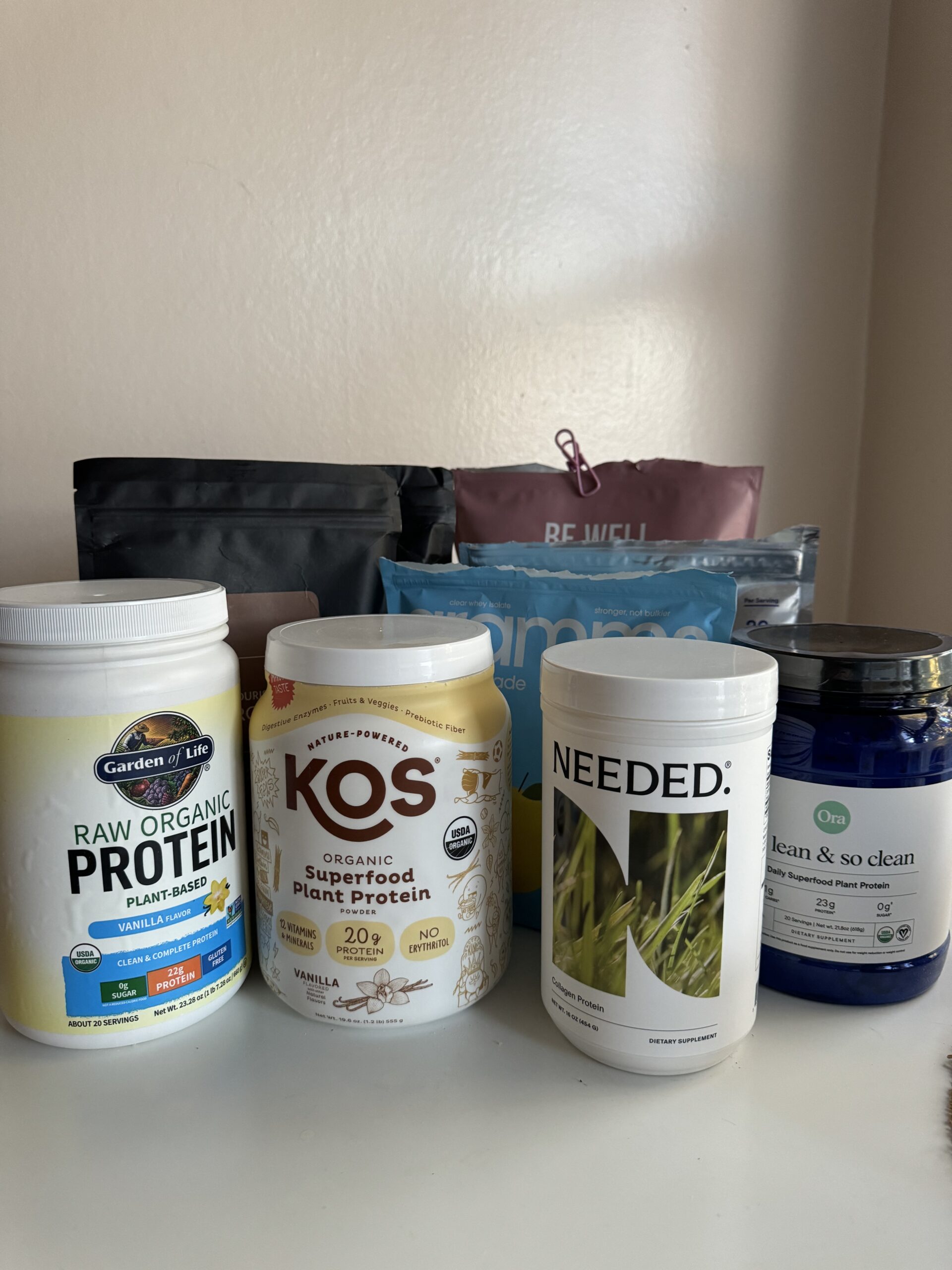
How Learning My Attachment Style Changed Everything
The first time I reached out to a counselor about my friendships, I messaged him this: “My best friend tells me I don’t share things about my life. She says she feels like she doesn’t even know me. She’s right. I don’t share what’s happening with me that much. Why do you think I would do that?”
His reply was, “Hmm, I don’t know. Just try sharing more often.”
What revolutionary advice. I read the response and closed my phone, annoyed.
Willing myself to “just try sharing more” seemed simple enough, but it didn’t answer my deeper question, “Why would I do this in the first place?”
“I was eager to know why I mindlessly withheld from relationships because I was beginning to realize it was hurting the people I love.”
My propensity to keep things to myself was one of the many pain points on my list of patterns I wanted to decipher when I reached out for help. I was eager to know why I mindlessly withheld from relationships because I was beginning to realize it was hurting the people I love. It was also keeping me from the closeness I wanted.
I suppressed details of my life, both good and bad. If I’d been promoted at work, had a challenging day, or was dating someone new, I simply didn’t think to share it. Left out of the loop of my life, my friends began to assume I didn’t trust them to be a part of it, and voiced their pain. Nothing could be further from the truth.
I was determined to solve the puzzle of why I was the way I was. I just didn’t know where to begin to find the pieces.
That was until one day when luck struck my YouTube feed.
“Could something that happened to me so long ago be dictating how I act today?”
A video popped up that explained avoidant attachment styles, social behaviors often marked by withdrawal. I felt exposed and empowered in one fell swoop. For the first time, I heard my behavior accurately described and given an etiology that connected it to experiences in early life. But, could it really be so? Could something that happened to me so long ago be dictating how I act today?
I dove into research that detailed how the subconscious mind, the reservoir of our personal experiences going back to infancy and the compounded meaning they’ve taken on, determines 95–97% of our thoughts, feelings, and behavior. That means, at most, what we consciously choose makes up only 5% of the picture of our life.
“Until you make the unconscious conscious, it will direct your life, and you will call it fate.”
– Carl Jung
Unless we do the work to identify the submerged stories fueling the 95%, our subconscious will determine much of our lives for us. Psychoanalyst Carl Jung attests, “Until you make the unconscious conscious, it will direct your life, and you will call it fate.”
This was a watershed moment, shifting my view on how I could grow beyond my patterns and transform my life.
Once I learned my tendency to avoid openness with my friends had a subconscious root, one that I could tug and unearth, I knew it was in my power to change long-term. This was bigger than breaking a habit. I had a way to trace the hidden paths to why I did what I did and tap it at its source.
Understanding this was essential to recognizing Attachment Theory for the tool it could be.
Attachment Theory originates from the combined work of psychologists John Bowlby and Mary Ainsworth. It proposes that we are neurologically hardwired for how we view, give, and receive love within the first two years of our lives.
“Attachment Theory proposes that we are neurologically hardwired for how we view, give, and receive love within the first two years of our lives.”
The theory suggests our early experiences with our primary caregivers — how attuned they were to our needs, how consistently they met them, and how emotionally available they were — program our understanding of love and how much of it we can expect throughout life.
Our first lessons in human connection become what Bowlby coined as “internal working models,” influencing the attachment style we develop and carry on later in life.
Today, four main attachment styles are recognized by researchers. They are outlined by The Attachment Project here and I’ve summarized their traits below:
Secure
Folks with this style are in tune with their feelings, communicate their needs, and have the tools to resolve conflicts without it threatening their sense of safety or autonomy. They likely grew up with an emotionally available caregiver who was consistently attuned to them and offered them space to express and work through their feelings without judgment.
Avoidant (or Dismissive)
Individuals with an avoidant style keep loved ones at arm’s length emotionally and subconsciously associate intimacy with abandonment and pain, so they often sabotage or avoid it altogether. Kiddos that developed this style learned early on there was a limit to how open they could be with their feelings without it bringing shame or consequences. They were expected to meet the majority of their needs themselves.
Anxious (or Preoccupied)
The anxious bunch dives headlong into relationships and holds on for dear life. Growing up in a household where their caregiver may have been inconsistent or emotionally hot and cold, anxious-styled individuals take it upon themselves to keep a tight hold on love when they find it. They are hyper-aware of any signs of abandonment or rejection and do everything they can to prevent it, even to their detriment.
Disorganized (or Fearful-Avoidant)
Those with a disorganized style are often individuals who experienced extreme abuse in early childhood. This style develops “when the child’s caregivers – the only source of safety – become a source of fear,” according to the Attachment Project. As adults, they struggle to feel safe in relationships and emotionally trust others, and their behavior is often an unpredictable mixture of both anxious and avoidant tendencies.
We all exist somewhere on the spectrum of attachment. While I already had a hunch that I was avoidant, I took a test to confirm where I fell.
Our styles can fluctuate, but they play a heavier hand in how we approach each other in relationships than we might realize.
Consider this analogy from Thais Gibson, founder of The Personal Development School.
“When two adults, each with their own attachment style, come together in a relationship of any kind, they have their own individual set of expectations for the connection.”
When two adults, each with their own attachment style, come together in a relationship of any kind, they have their own individual set of expectations for the connection. According to Gibson, it’s like sitting down to play a board game together, but one person has the rules for Scrabble, and the other has the rules for Monopoly. As the game unfolds, neither parties are aware of the separate set of rules the other is playing with. All they see is the other person not playing by theirs. This mismatch of unspoken expectations creates unnecessary friction, disappointment, and miscommunication in the relationship.
My tendency to under-share was an automatic rule in how I engaged my friends, but with the roadmap of Attachment Theory, I learned where it came from and gained a tool to help me address it. It didn’t have to be an ongoing pattern I would always succumb to.
And that’s where Attachment Theory empowers us: Our styles are not permanent. We can move the needle towards secure attachment by using the theory like a fishing line, pulling up underlying motivations to understand their origin and replacing those patterns with new beliefs.
“Once I understood what subconscious stories were informing this narrative, I worked to uproot and replace those beliefs.”
Tracing the root of my chronic privacy in relationships, I boiled it down to the fact that I subconsciously believed I could avoid rejection by keeping things to myself and not expecting anyone to care. Because of my avoidant programming, I learned early on to assume people were too busy to be there for me, so I lessened my need for them entirely to sidestep that pain.
Once I understood what subconscious stories were informing this narrative, I worked to uproot and replace those beliefs. I volunteered details about my life to my friends in a way I hadn’t before. It felt unnatural because, for me, it was — even scary and vulnerable sometimes. But in doing so, I allowed the evidence of my friends’ love and attention in return to reinforce these new neuropathways I was creating: My friends see me. They’re not too busy to care. They want to know about my life.
Learning my style helped me realize my inability to break habits before wasn’t because I was defective, lacked willpower, or simply didn’t love my friends enough. It was because the driving force of 95% of this behavior came from my subconscious beliefs, and I had to go beneath the surface to identify them.
It’s no quick fix. It’s exposing and humbling work that a professional’s guidance can significantly aid. Still, by learning our attachment styles, we can lay its blueprint over our unconscious behaviors, helping us navigate our beautifully complex minds and stories.
“It’s no quick fix. It’s exposing and humbling work that a professional’s guidance can significantly aid.”
I recently sat at my friend’s kitchen table as she boiled us potatoes for dinner. I’d had an overwhelming week, sorting through mountains of self-doubt and fear, and I was struggling. She asked, “So, how are you?” Previously, my instinct was to glaze over the details and transition the conversation to focus on her as quickly as possible.
But this time, I didn’t.
I recognized how my urge to avoid and withhold bubbled up at her question. But I also recognized the opportunity to move the needle a fraction more towards security, letting the love of my friend slowly teach my subconscious mind that I’m safe in expressing my emotions, the details of my life are worth sharing, and she’s not too busy to care about them.
So I took a breath and chose not to run from the tension. I opened up a little bit more, and the needle moved.
Cheyanne Solis is a writer from California. When she’s not planning weddings or acting like a grandpa by bird-watching in the park with a copy of the Sunday Times, she is falling into fascination about the human experience, working to write words to wrap around it all.



